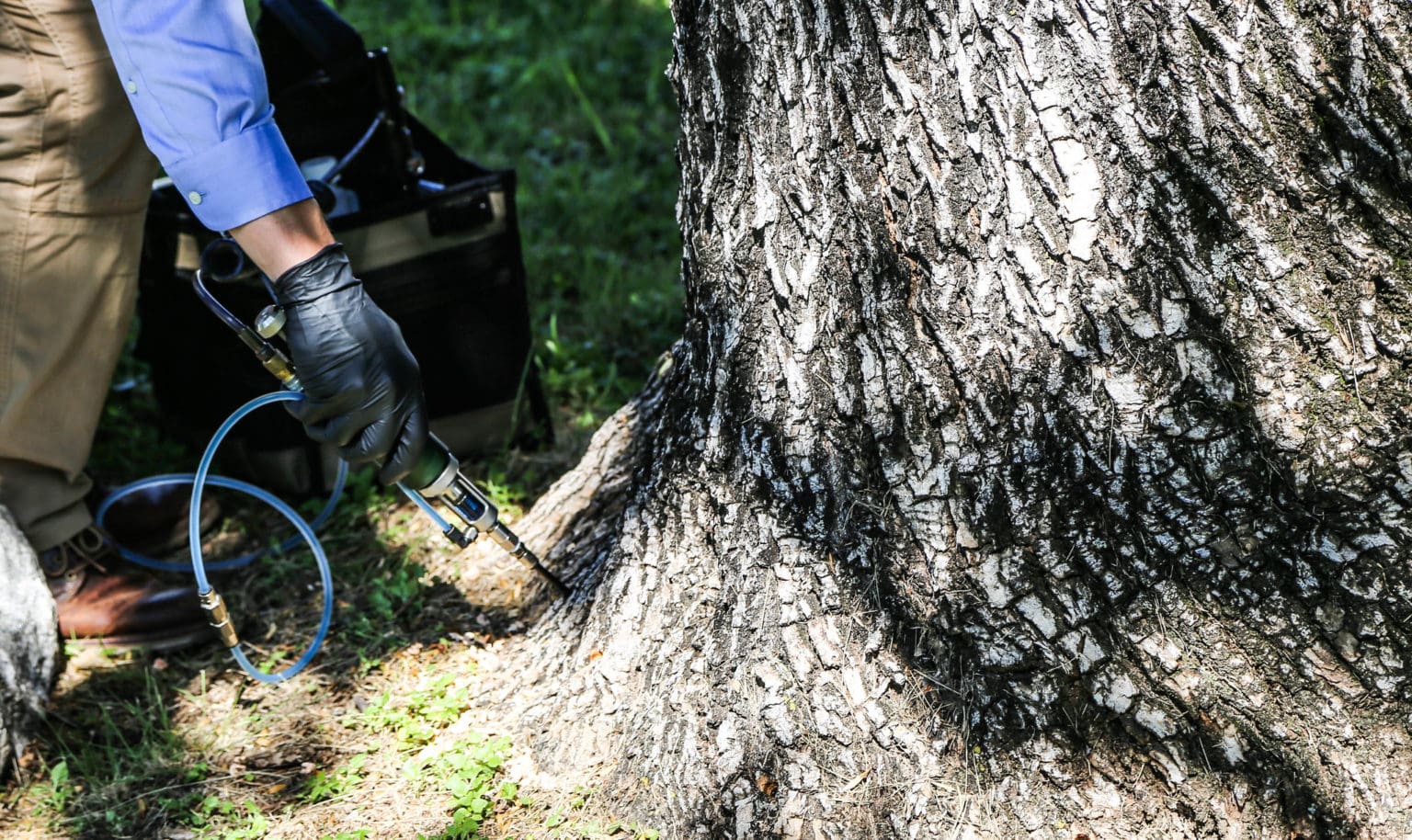
Just like humans can benefit from a shot when they’re feeling under the weather, tree injections can be a helpful tool when it comes to restoring or maintaining a tree’s overall health.
First introduced in the 1970s, tree injections have become widely accepted as a tree health care service. These targeted injections can provide protect against various pests and diseases like Dutch Elm disease, emerald ash borer, apple scab, oak wilt and more. They can also be used to provide supplemental nutrients, fertilizers and growth regulators.
Because these injections introduce the desired product directly into the xylem of the tree, this allows for faster uptake than a soil drench. It also eliminates the risk of spray drift and dilution from the weather. Depending on the chemicals being used, these injections can last anywhere from one to three years.
While tree injections are certainly helpful, communicate to clients that injections are not vaccinations. They can control diseases but not cure them. Additional applications will be needed over time.
Because tree injections do wound the tree, make sure to evaluate the following criteria before deciding tree injections are the best course of action.
- What does the client want to do?
- Is the tree healthy enough for a tree injection?
- Where is the tree located and are there limitations on other methods?
- Does the science support the active ingredient and application device being used?
- Is there enough time between treatment intervals for the wounds to close?
Micro Versus Macro Applications
The key to successful tree injections is knowing whether a micro-injection or a macro-injection is needed.
Micro-injections use a small injection needle and are ideal for treating trees with insecticides, miticides and antibiotics. They only inject a small, concentrated amount of chemicals into the tree’s vascular system at multiple points around the tree. They typically do not reach every part of the tree.
As for how many injection points are needed, it is recommended to divide the diameter of the tree at breast height in inches (DBH) by two and make that number of injections six inches apart at the root flare.
Meanwhile, macro-injections are better suited for treating vascular wilts such as Dutch Elm disease or oak wilt. They use a higher volume of water and chemicals, allowing them to spread throughout the entire canopy. Because they use more water, macro-injections require a larger pressure system. While micro-injections can take minutes, macro-injections tent to take several hours.
Factors Affecting Uptake
The optimal injection zone is in the root flare of the tree. This area has more active xylem allowing for faster uptake and enhanced distribution throughout the trunk and canopy. Root flares also have a better ability to heal from tree injection wounds versus trunk tissue.
Other factors that can impact uptake include the wood anatomy, soil moisture and tree health. Different species of trees have different tissue structure. Ring porous trees are faster to inject than diffuse porous trees. Trees affected by drought or overwatering can have decreased uptake time. Similarly, trees growing in other stressful conditions will have slowed uptake time as well.

